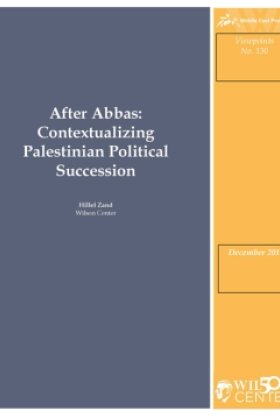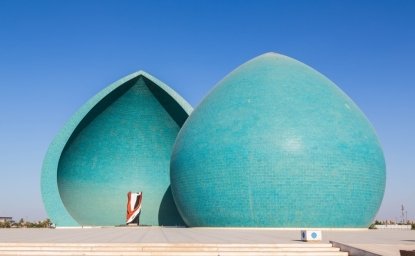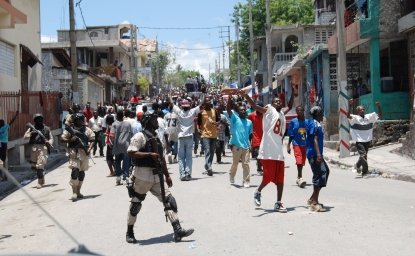After Abbas: Contextualizing Palestinian Political Succession


Until Death Do Us Part
“It’s possible that this is my final meeting with you. No one knows how long [I] will live. No one can force a political plan upon me that I don’t want. Only what I want will happen; I will not end my life with betrayal!”[1]
These are the words reported to have been spoken by Palestinian Authority (PA) President Mahmoud Abbas at the Fatah Revolutionary Council’s meeting in March 2018. While details of the Council’s meetings are normally publicized, those from this most recent meeting were not. What is clear, however, is that the ailing, 83-year-old Abbas is keen on orchestrating what Palestinian leadership will look like immediately after he no longer holds the presidency. Equally clear is that, almost fourteen years into his four-year presidential mandate, and despite the fact that more than 60% of Palestinians in the West Bank and Gaza want him to resign, Abbas will only yield power upon his own death or incapacitation.[2]
The question of Palestinian succession remains an enigma, one characterized by speculation and hypotheticals, largely due to the legal ambiguousness that faces Palestinian politics. Numerous analysts have posited possible presidential contenders — from the establishment to the radicals to the wild cards — and ranked their likelihood of accession.[3]
Yet the identification of potential successors is immaterial in the absence of a more robust contextual framework. The most significant questions surrounding the issue of Palestinian succession are not about who could succeed Abbas, but rather, what will be the conditions in which the successor accedes to power and what factors will determine their success. Using this reverse engineering — in first identifying the successful end-game before the immediate successor — will allow for a more nuanced analysis of Palestinian political succession.
Not since the death of Yasser Arafat in 2004 have the Palestinian people faced a succession crisis. Abbas’s succession to Arafat’s 35-year rule of the PLO took place in markedly different circumstances than that which the next Palestinian president will find him or herself in. Both internal and external considerations will factor heavily into the determination of Abbas’s successor, regardless if the determination is made through a democratic election or autocratic appointment, and whether it be six months or six years from now.
Legal Framework
Part of the difficulty in analyzing Palestinian succession lies in identifying the respective interests and legal frameworks of each actor found within the alphabet soup of Palestinian institutions: the PA, PLC, PLO, PNC, PFLP, DFLP, PNI and others.
When Arafat died in 2004, Abbas inherited each of his predecessor’s four hats: president of the PA, chairman of the PLO, chairman of Fatah, and president of the State of Palestine (which was declared by the PLO in 1988). Whether Abbas’s successor will also wear all four hats is a provoking question, as some doubted that Arafat’s successor would be able to do so.[4] But the only title that will be of importance after Abbas’s reign in office ends is that of President of the Palestinian Authority. Despite the shortfalls of the Oslo process, the PA remains the political entity responsible for civil authority in Areas A and B of the West Bank (and ostensibly Gaza as well), security cooperation with Israel, and international negotiations for statehood.
Article 37 of the PA’s Basic Law states that in the case of the vacancy of the presidency, the Speaker of the Palestinian Legislative Council (PLC) will temporarily assume the powers and duties of the presidency for no more than sixty days, during which elections will be held.[5] The only problem, however, is that the PLC has not sat since 2007, when Abbas suspended the body after the Palestinian Civil War. That is why, at their meeting in March 2018, the FRC named proclaimed that if Abbas’s office were to be vacated, the election of a new PA president would fall to the PLO — which does not include Hamas in its representation — rather than the PLC. A month later, the PNC (the legislative body of the PLO) met for the first time in 22 years.
Because of the irrelevance of the PLC (at least for the past eleven years) and the PNC (which appears to only arise when politically advantageous), the question of who would replace Abbas through a methodical, codified transition process is rendered irrelevant. In fact, all institutions creating during the Oslo process officially expired in May 1999, so the PA is technically continuing to operate in legal limbo more than 19 years after its expiration date.
Factors for Success
West Bank-Gaza Strip Reconciliation
Long before a potential two-state solution can be achieved, the two proto-states currently found in the West Bank and the Gaza Strip must first be amalgamated in terms of institutional uniformity, national sovereignty and political leadership. Since the Palestinian Civil War (2006-07) in Gaza between Fatah and Hamas led to the splintering of the Palestinian Authority, the two geographic bodies have stood virtually independent of one another. Abbas’s successor cannot expect to improve Palestinian geopolitical status through a continuation of the Noah’s Ark model: two governing political parties, two civil authorities and two security forces in two detached territories.[6]
Near-yearly attempts at Fatah-Hamas reconciliation have resulted in six agreements, including as recently as October 2017. Yet these agreements have served little purpose other than attempts to bolster each party’s legitimacy among their respective constituents as the torchbearer of the Palestinian political arena. Despite the prescriptions of these agreements, the fact remains that political reconciliation has not been achieved on the ground.
Monopoly on Violence
The ability to reconcile the West Bank-Gaza divide will rely heavily on a central tenet of Weberian theory of statehood: the state’s ability to claim a monopoly on violence. While the PA’s Palestinian Security Services (PSS) maintains considerable security cooperation with Israeli authorities to maintain relative levels of calm in the West Bank, the same cannot be said in Gaza. The sole security cooperation practiced by Hamas and its internationally terrorist-designated military wing, the Al-Qassam Brigade, is with international bankrollers, especially Iran’s Islamic Revolutionary Guard Corps. Even within Gaza’s borders, Hamas struggles to maintain its own monopoly on violence, regularly staving off competing militant groups, including Palestinian Islamic Jihad’s Al-Quds Brigade and Fatah’s Al-Aqsa Martyrs Brigade.
Palestinian national reconciliation must be accompanied by a unified, legitimate security force that exercises complete authority in both the West Bank and Gaza. Abbas’s successor must have sufficient social capital to navigate all competing militant groups and centralize the Palestinian security infrastructure such that it can maintain international legitimacy and security cooperation with Israel and neighboring countries.
Representing a Continuation of Oslo
As of September 2018, two-thirds of Palestinians believe that the 1993 Oslo Accords have harmed Palestinian national interests.[7] More than 25 years since they promised a path to Palestinian statehood, the Accords have lost a clear majority of public support.
Given the level of public disillusionment with the Oslo Accords, the degree to which Abbas’s successor represents a continuation of the Oslo process will be central to their level of popular legitimacy. While a successor from the younger, more populist Intifada Elite may be harder for Israel to cut a peace deal with, that person’s higher level of popular legitimacy will ensure that such a peace deal is more likely to be publicly accepted and implemented.[8]
Relative Acceptability
Besides being afforded popular legitimacy by the Palestinian people, Abbas’s successor will also need to be relatively acceptable to three (technically four) partner blocs: Israel and the United States, Hamas, and the Arab world.
For all intents and purposes, Israel and the US can be treated as one bloc because of their aligned interests and entrenched security ties. When the Hamas takeover of Gaza became immediately unacceptable to Israel, it became equally so for the US. Were Abbas’s successor to not hold the American-sanctioned international legitimacy necessary to carry out his or her agenda, he or she will make little headway in the global arena.
If new legislative elections were held today, only 27% of Palestinian voters would vote for Hamas (compared to 36% for Fatah).[9] Although the level of popular support for Hamas has seemingly declined since the 2006 elections, Hamas will not take kindly to a post-Abbas world in which they are not afforded a seat at the table. Abbas’s successor will need the blessings of Hamas leadership in order to govern effectively, especially in Gaza. While this candidate may not necessarily be a Hamas member, they will have to co-opt the party into their political apparatus.
The Arab world will also have to show relative acceptability of whomever is to succeed Abbas. Although the Palestinian issue is less of a priority in the Arab world than it once was, Arab leaders still have a seat at the table so long as the Arab Peace Initiative is still a relevant negotiating framework. As clandestine economic and security cooperation between Israel and a number of Arab states — particularly in the Gulf — continue to take shape, a PA president who poses a threat to these sources of cooperation will not be accepted well by regional hegemons, especially Egypt and Jordan (the only two Arab states having diplomatic relations with Israel), and Saudi Arabia and the UAE.
Economic Livelihood
Palestinian gross national income per capita adjusted for purchasing power parity has increased more than 250% since the signing of the Oslo Accords.[10] And out of the 105 developing countries and territories in the 2018 Multidimensional Poverty Index, Palestine had the 10th-lowest incidence of multidimensional poverty, one place ahead of Jordan.[11]
Despite these positive developments, the average Palestinian still faces considerable economic constraints, particularly in Gaza, whose external borders have been controlled by Israel since the Hamas takeover in 2007. Thirty percent of Gazans and 18% of West Bank Palestinians live below the poverty line, and unemployment stands at 26.7%.[12] When Palestinians were asked what the most serious problem is facing their society today, the number-one response (27%) was poverty and unemployment.[13]
With economic livelihood at the forefront of Palestinian society public opinion, Abbas’s successor must be able to spur economic growth and public investment in human capital. The fact that half of Palestinians identify poverty, unemployment and corruption as the most serious problem in Palestinian society indicates that domestic livelihood considerations are just as important, if not more, than issues relating to the Israeli-Palestinian conflict writ large.
Youth and Young Adult Approval
Sixty-nine percent of Palestinians in the West Bank and Gaza are below age 30, part of the generation of the First and Second Intifadas and the three military operations in Gaza from 2009-2014.[14] Approximately a third of the Palestinian electorate is between 20 and 30 years old, while those between 20 and 40 years make up approximately 57% of the electorate.[15]
Even if Abbas’s successor is not chosen through a democratic election, the fact remains that the Palestinian youth are increasingly affecting the on-the-ground developments within their own society.[16] The 2011 Arab uprisings evidenced the capabilities of young citizens to mobilize, even in the absence of a strong civil society, and induce reforms from autocrats and monarchs alike. Abbas’s successor — who will likely be the first to not have been born in Mandatory Palestine — will have to distinguish themselves from Palestinian rule for the past 25-plus years: leadership by aging bureaucrats representing the Palestinian generation of yore.
What is (Seemingly) Certain
In prognosticating what Palestinian leadership will look like after Abbas, there may be no certainties, but there are a number of highly probable outcomes which must be addressed.
First, Mustafa Barghouti — a prominent Fatah figure and Intifada leader who is currently serving five life sentences in Israeli prison for murder, and still exerts a considerable amount of political influence from his jail cell — will not succeed Abbas. Despite the fact that a plurality of Palestinians would prefer to see Barghouti replace Abbas[17], Barghouti will not succeed Abbas for one simple reason: Israel will never let it happen. Israel has no incentive to release Barghouti, especially after he called to end security cooperation with Israel and for a Third Intifada in 2014.[18] For this reason alone, this hypothetical must be laid to rest.
Second, political succession does not mean political transition.[19] Much to the chagrin of Western democratization stalwarts, the end of Abbas’s reign will not instantaneously bring about a more prosperous and democratic Palestinian society. Corruption and inequality will not evaporate overnight. A final-status agreement with Israel will not be signed the next day.
Third, intra-Fatah strife will help Hamas. For as much animosity there is between Fatah and Hamas, there is just as much within Fatah itself, particularly between Abbas and Mohammed Dahlan, the former head of the PSS. Dahlan has lived in exile in the UAE since 2011 after Abbas accused him of poisoning Arafat. Pro-Abbas and pro-Dahlan loyalists frequently clash, including a notable confrontation between university students in Gaza in July 2018.[20] Hamas could easily exploit such intra-Fatah tensions to emphasize its own relative political stability.
Lastly, failure to reconcile the West Bank-Gaza divide will only further stagnation, and has likely already been exploited by Israel. When asked what main factor that emboldened the United States to move its embassy in Israel to Jerusalem, a plurality (28%) of Palestinians cited a weak and divided Palestinian society.[21] The relative costs to Israel of imposing a divide-and-conquer approach to the West Bank and Gaza are relatively minimal relative to the political benefits it reaps from doing so. Positive developments toward Palestinian national unity could help thwart this.
Conclusion
Palestinian society is marked by its duality, particularly by the duality of the West Bank and Gaza. Policymaking in the absence of formal statehood adds a whole new complexity to these considerations. Palestinian politics is certainly contingent on factors relating to the Israeli-Palestinian conflict writ large. But it is also contingent on an abundance of internal factors, be it internal security, economics and livelihood, or a changing demographic. This duality is reflected in polling, as well:
The most serious problem confronting Palestinian society today in the eyes of 27% of the public is poverty and unemployment while 25% say it is the continuation of occupation and settlement activities; 22% say it is the spread of corruption in public institutions; 20% say it is the siege of the Gaza Strip and the closure of its crossings...[22]
Abbas’s successor will have a significant domestic, regional and international mandate to achieve. Achieving this mandate will be increasingly difficult among a population who has become increasingly disillusioned with the Palestinian politics as a whole: 37% of Palestinians don’t support any political party.[23]
It is also plausible that a form of collegial leadership could succeed Abbas’s presidency. An opaque succession framework coupled with inter- and intra-party power struggle could very well result in a form of collective leadership featuring a who’s who of Palestinian leadership. While one person may fill the official presidential role, a band of bureaucrats, technocrats and populists could take shared responsibility to guide the Palestinian agenda. Imagine PLO stalwart Saeb Erekat conducting the diplomacy, former Minister of National Economy Mohammad Mustafa guiding the economy, and Fatah superstar-in-exile Dahlan returning home to secure the support of the body politic. Such permutations are endless.
While it is impossible to predict the context in which his or her mandate will arise, global onlookers and Palestinians alike can still formulate rational expectations as to which factors will determine the success of whoever succeeds Abbas. Thus, the central question Palestinians ought not to be asking “Who do we want?” when it comes to their future leader, but rather, “What do we want?”
~ ~ ~ ~ ~ ~ ~ ~ ~
1 Yoni Ben Menachem, “Fatah Prepares to Replace Mahmoud Abbas,” Jerusalem Center for Public Affairs, March 6, 2018, http://jcpa.org/fatah-prepares-replace-mahmoud-abbas/.
2 Bishara Bahbah, “Replacing Mahmoud Abbas: Issues and Likely Candidates,” Arab Center Washington DC, July 30, 2018, http://arabcenterdc.org/policy_analyses/replacing-mahmoud-abbas-issues-and-likely-candidates/.
3 See Bishara Bahbah, “Replacing Mahmoud Abbas: Issues and Likely Candidates,” and Grant Rumley, “The Race to Replace Mahmoud Abbas: Understanding and Shaping Palestinian Succession.”
4 See Glenn E. Robinson, “After Arafat” in “Political Succession in the Middle East,” Middle East Policy 9(3), September 2002, p. 116.
5 2003 Amended Basic Law, https://www.palestinianbasiclaw.org/basic-law/2003-amended-basic-law.
6 Aaron David Miller, “How Hamas Won the War,” Foreign Policy, November 19, 2012, https://foreignpolicy.com/2012/11/19/how-hamas-won-the-war/.
7 Palestinian Center for Policy and Survey Research, “Public Opinion Poll 69,” September 2018, http://pcpsr.org/en/node/733.
8 Robinson, “After Arafat,” p. 117.
9 Palestinian Center for Policy and Survey Research, “Public Opinion Poll 69,” September 2018.
11 “Global MPI 2018,” Oxford Poverty & Human Development Initiative, https://ophi.org.uk/multidimensional-poverty-index/global-mpi-2018/.
12 CIA World Factbook.
13 Palestinian Center for Policy and Survey Research, “Public Opinion Poll 69,” September 2018.
14 PopulationPyramid.net, “State of Palestine,” https://www.populationpyramid.net/state-of-palestine/2016/.
15 Friederike Hartl and Katrin Jaschinski, “Studies on Youth Policies in the Mediterranean Partner Countries: Palestinian Occupied Territories,” Euromed, http://www.youthpolicy.org/national/Palestine_2009_Youth_Policy_Study.pdf.
16 See Jeff Moskowitz, “The Next Generation of Israeli-Palestinian Conflict,” The Atlantic, July 9, 2014, https://www.theatlantic.com/international/archive/2014/07/the-next-generation-of-israeli-palestinian-conflict/374184/.
17 Palestinian Center for Policy and Survey Research, “Public Opinion Poll 69,” September 2018.
18 Umberto Bachi, “Jailed Palestinian Leader Marwan Barghouti Calls for Third Intifada Against Israel,” International Business Times, November 11, 2014, https://www.ibtimes.co.uk/jailed-palestinian-leader-marwan-barghouti-calls-third-intifada-against-israel-1474273.
19 See Louis J. Cantroi, “Introduction” in “Political Succession in the Middle East,” Middle East Policy 9(3), September 2002, p. 105.
20 Khaled Abu Toameh, “Abbas, Dahlan loyalists clash at Gaza’s al-Azhar University,” The Jersualem Post, July 16, 2018, https://www.jpost.com/Middle-East/Abbas-Dahlan-loyalists-clash-at-Gazas-Al-Azhar-University-562667.
21 Palestinian Center for Policy and Survey Research, “Public Opinion Poll 69,” September 2018.
22 Ibid.
23 Ibid.
Author

Middle East Program
The Wilson Center’s Middle East Program serves as a crucial resource for the policymaking community and beyond, providing analyses and research that helps inform US foreign policymaking, stimulates public debate, and expands knowledge about issues in the wider Middle East and North Africa (MENA) region. Read more




